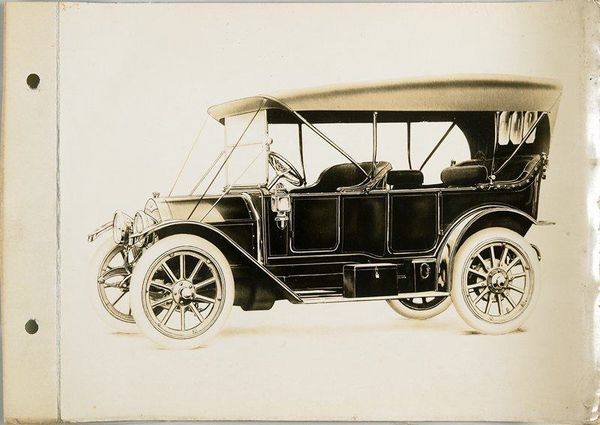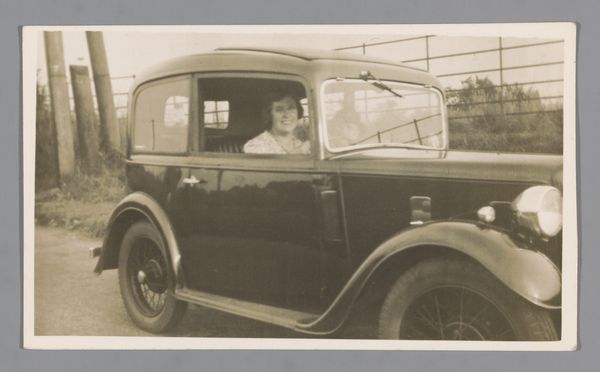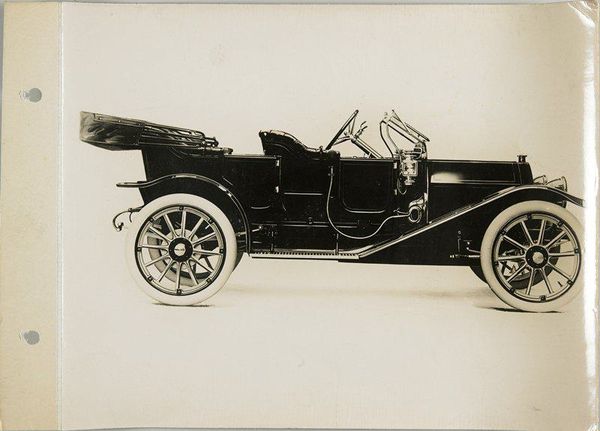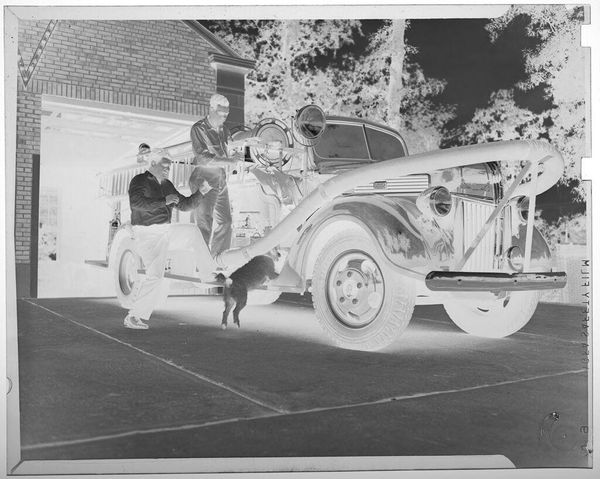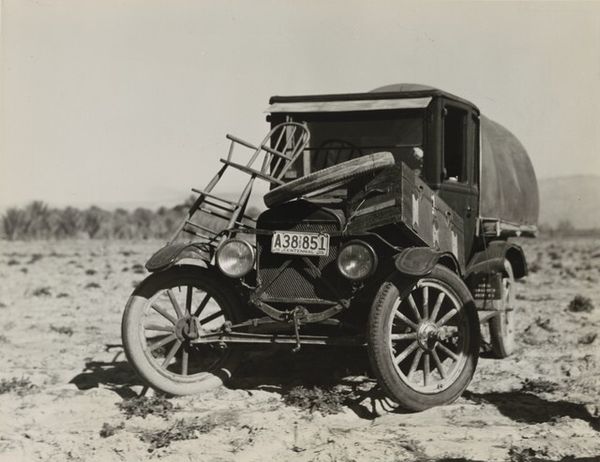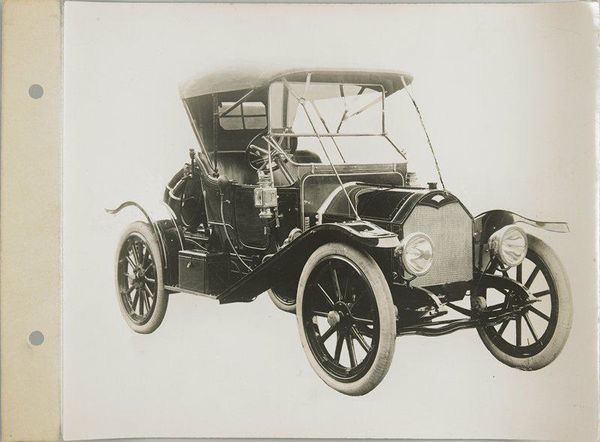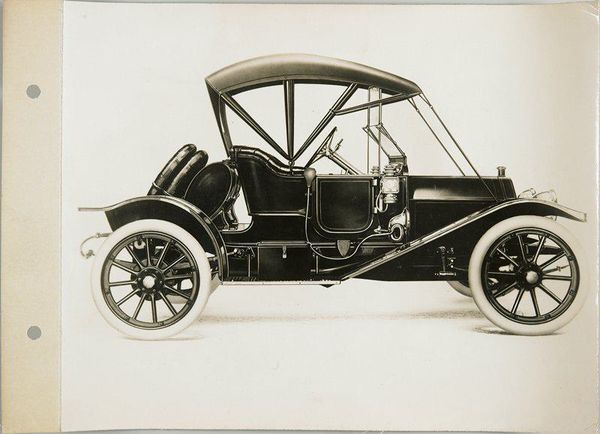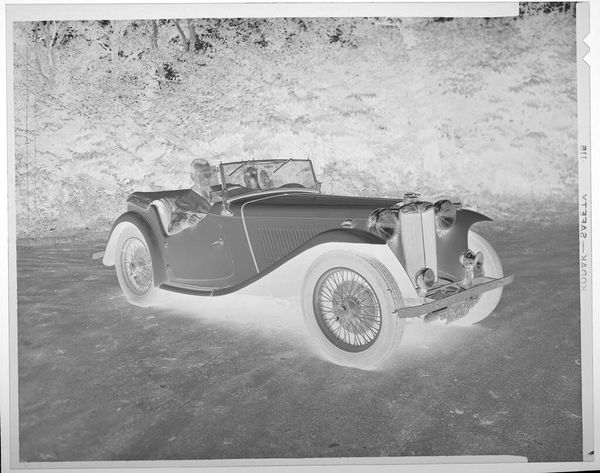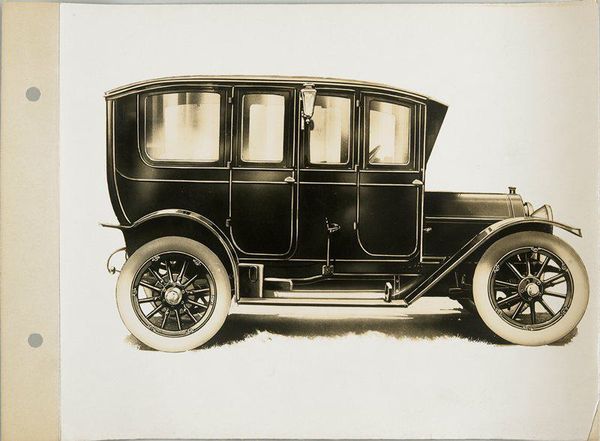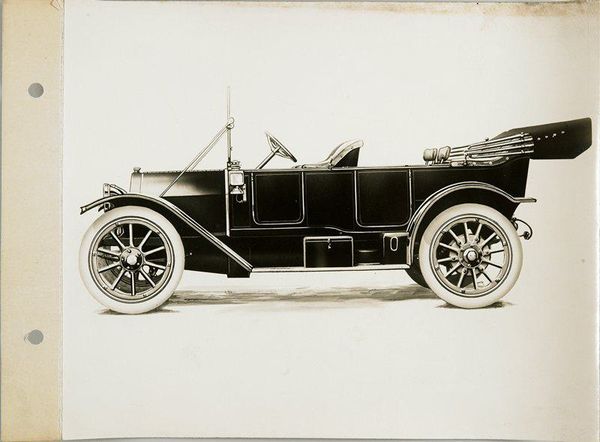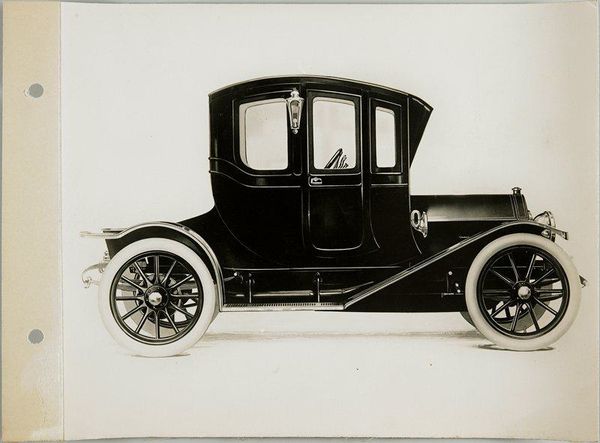
Auto van het merk Studebaker met de vaudeville-zangeres Trixie Friganza ernaast 1920 - 1930
0:00
0:00
photography, gelatin-silver-print
#
portrait
#
archive photography
#
photography
#
historical photography
#
gelatin-silver-print
Dimensions: height 198 mm, width 254 mm
Copyright: Rijks Museum: Open Domain
Editor: Here we have an anonymous gelatin-silver print from somewhere between 1920 and 1930, titled "Auto van het merk Studebaker met de vaudeville-zangeres Trixie Friganza ernaast", so "Studebaker car with the vaudeville singer Trixie Friganza next to it". It’s a striking image. The sharp focus on both Trixie and the car conveys a clear sense of pride and importance. How do you interpret this work within its historical context? Curator: It's a fascinating document of early 20th-century celebrity culture and the rise of the automobile. This image isn't just a portrait; it's a statement about social status and access. What do we know about Trixie Friganza’s career? How did her fame intersect with this burgeoning car culture? Think about the public role of performers and the new kinds of mobility afforded by cars. The car becomes almost like a stage, a platform to amplify Friganza’s image. Editor: That’s interesting. I hadn’t thought about the car acting as a stage. She was popular during that era, but how did gender affect her agency? Was she actively shaping this image, or was she being presented through someone else's lens? Curator: Exactly. The question of agency is crucial. We must consider who controlled the means of representation. How were women portrayed in media during this time? What were the dominant narratives about female performers, wealth, and technology? The image both reflects and potentially subverts societal expectations. Friganza's presence challenges notions about the proper place of women, even while adhering to certain glamorous conventions. Editor: It seems like it's more than a photograph. It is an artifact that highlights a cultural and societal landscape during the interwar period. I hadn't fully considered the implications beyond face value. Curator: Precisely! And by examining these intersections—gender, celebrity, technology—we can gain deeper insights into the historical moment captured here. It’s a great example of how an artwork tells more than one story.
Comments
No comments
Be the first to comment and join the conversation on the ultimate creative platform.
